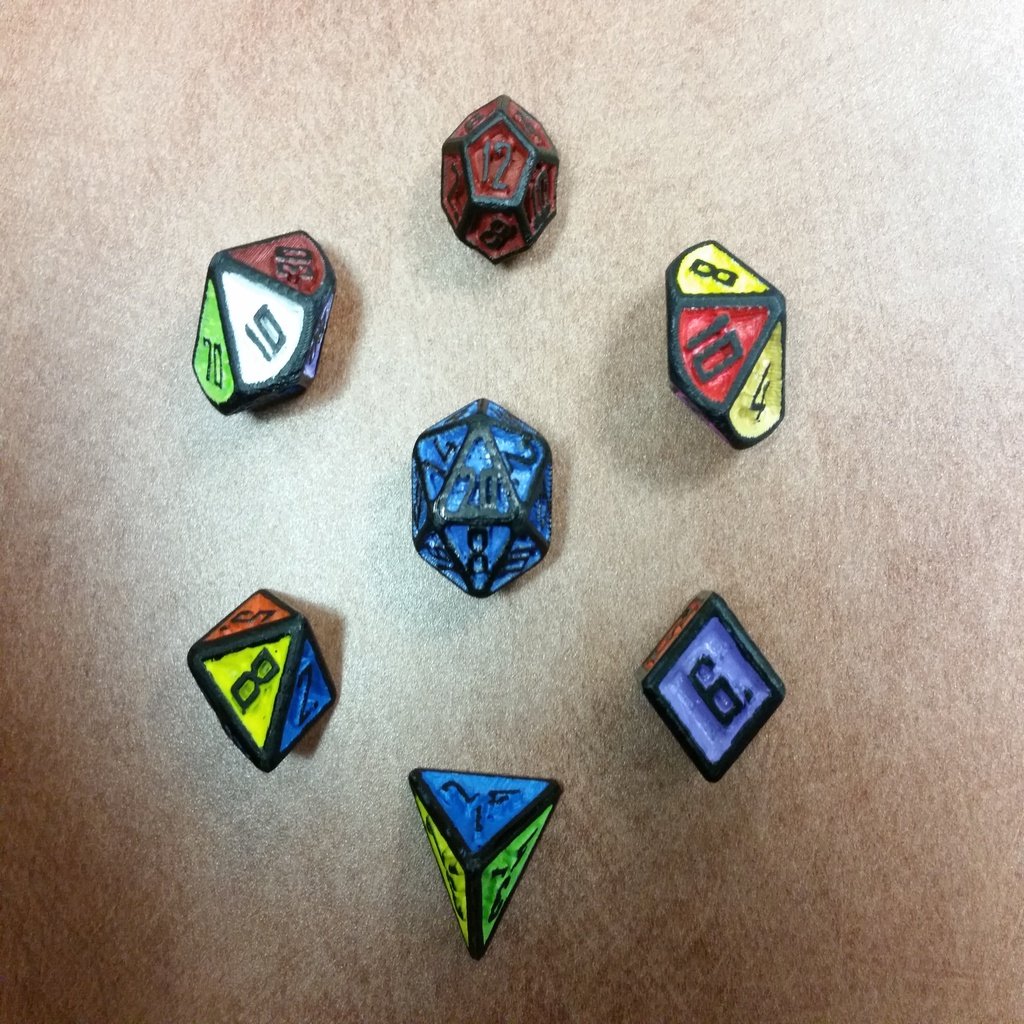
D&D Dice Set with Outset Numbering (d4, d6, d8, d10, d%, d12, d20)
thingiverse
<h2>v2</h2>\r\nhttps://www.thingiverse.com/thing:4232491\r\n\r\n<h2>A New D&D Dice Set</h2>\r\nI had to create my own dice set with inset faces because I couldn't find one that met my requirements, except for the numbering.\r\n\r\nSeven die set: d4, d6, d8, d10 (0-9), d% (00-90), d12, and d20.\r\n\r\nPrinting was a success, thanks to using a thin layer height. The dice rolled evenly, and I made some adjustments to the models after printing. They look great with fine grit sandpaper and a sharpie. Good for painting.\r\n\r\n<h2>Measurements Before Smoothing Edges</h2>\r\n<pre>\r\nd4: 18mm center to top, 1.6mm inset, 45° taper\r\nd6: 14.5mm side length, 1.8mm inset, 40° taper\r\nd8: 23mm point to point, 1.7mm inset, 35° taper\r\nd10: 20mm point to point, 1.6mm inset, 30° taper\r\nd12: 20mm @ max width, 1.7mm inset, 25° taper\r\nd20: 24mm @ max width, 1.6mm inset, 20° taper\r\n</pre>\r\n\r\nI spent a lot of time designing the dice numbering to ensure it was balanced and fair. For the d20, I used an ideal numerically balanced system described in this paper: http://www2.oberlin.edu/math/faculty/bosch/nbd.pdf.\r\n\r\n<h2>Base Forms</h2>\r\nI based my dice on platonic solids from Dan Hienzsch via https://hackaday.io/project/161211-parametric-platonic-solids-from-fusion-360. The pentagonal trapezohedron (d10, d%) came from Zdolshin via https://www.thingiverse.com/thing:3321837 and was modified to be fully solid.
With this file you will be able to print D&D Dice Set with Outset Numbering (d4, d6, d8, d10, d%, d12, d20) with your 3D printer. Click on the button and save the file on your computer to work, edit or customize your design. You can also find more 3D designs for printers on D&D Dice Set with Outset Numbering (d4, d6, d8, d10, d%, d12, d20).
